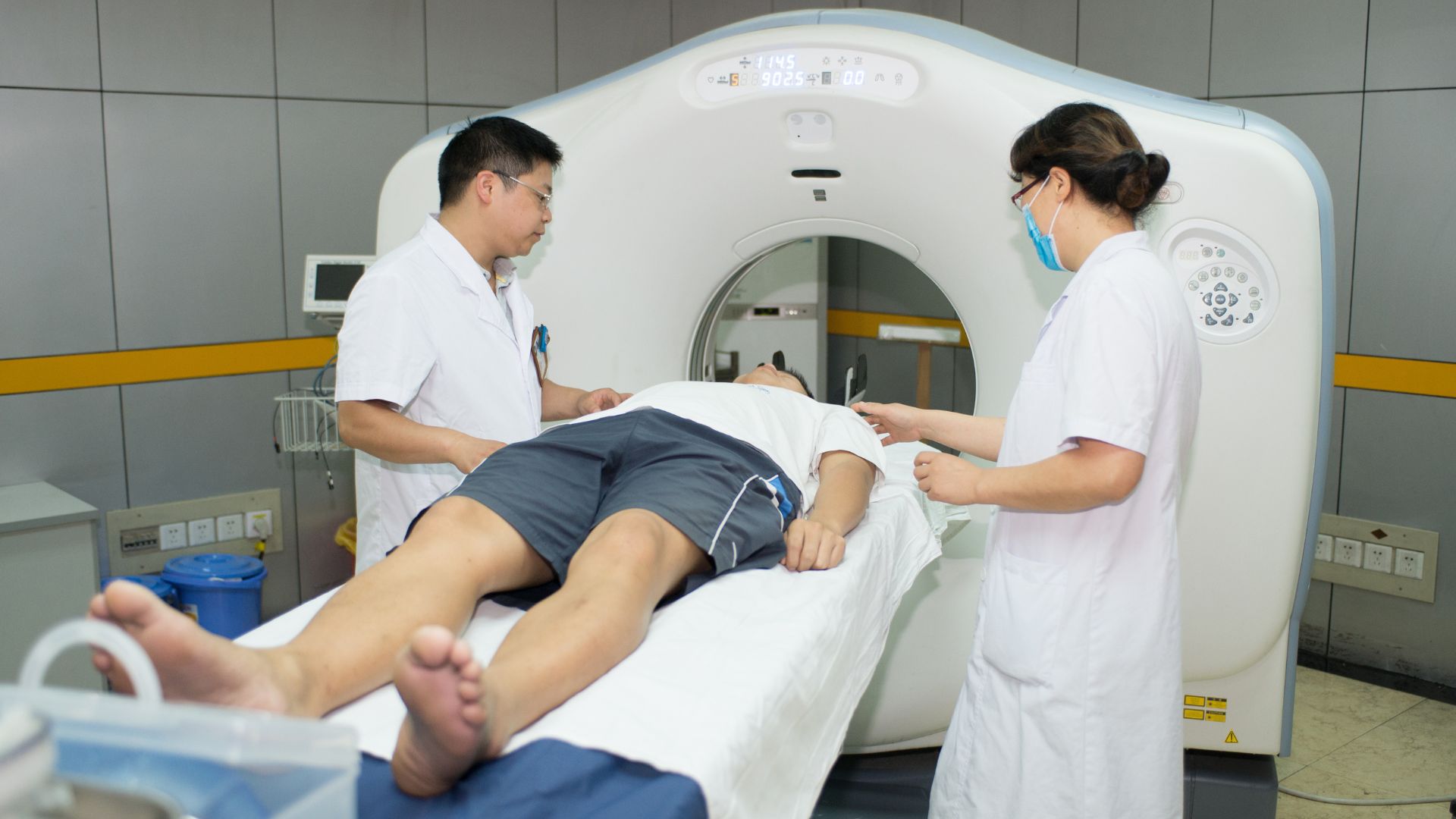Ever had to spend an embarrassingly long time in the toilet, bloated and in pain with little relief? Constipation often results in pencil-thin stools, which looks narrower than usual. While this can be resolved with certain lifestyle changes, persistent narrow stools could indicate a more serious medical condition, including colorectal (colon) cancer.
In this article, we’ll explore what pencil-thin stools indicate about your colon health and the possible link to colon cancer. Knowing when to seek medical advice and ways to improve your colon health is vital in early diagnosis and prevention.
Table of Contents
ToggleWhat Causes Pencil-Thin Stool?
Pencil-thin stools appear narrow and stringy instead of the usual sausage-like shape. They can be caused by many factors ranging from temporary dietary changes to more serious medical conditions. If narrow stools persist for weeks, it may indicate an obstruction in the colon, which requires immediate medical attention.
Common causes for narrow stools
Constipation
High fibre and fluids help to bulk up the stool, making it easier to pass. Narrow stools may indicate that you need to incorporate more fibre and water into your diet. Constipation is often accompanied by other symptoms such as bloating and dry stools.
Irritable Bowel Syndrome (IBS)
IBS is a set of intestinal symptoms such as abdominal pain, diarrhoea, constipation, bloating, and more. While the exact cause is unknown, changes in bowel habits could cause stool shapes to change.
Infection
Gastrointestinal infection, often from ingesting contaminated food, can cause loose stools that appear thinner. Other symptoms include nausea, vomiting, fever, and headaches.
Haemorrhoids
Swollen veins in the rectum and anus can partially block the rectal opening, forcing the stool to squeeze through and thus become thinner. Haemorrhoids often develop when there is heavy pressure on the rectal veins, such as from chronic constipation, diarrhoea, or pregnancy.
Persistent narrow stools may indicate a larger blockage in the colon or anus such as a tumour, which requires immediate medical attention.
The Link Between Pencil-Thin Stool and Colon Cancer
Colon cancer can cause stool to become thin by narrowing the intestinal passage. As a tumour develops, it may partially or completely block the colon, leading to difficulty in passing stool. This can disrupt the normal shape and consistency of the stool, often making it thinner.
In addition, colon cancer often leads to changes in bowel habits like constipation and diarrhoea, which affects stool formation. Stools may appear lumpy or pencil-thin and flat.
Additional symptoms that often accompany colon cancer include:
- Abdominal pain from tumour blockage
- Unexplained weight loss
- Fatigue
- Change in bowel habits e.g. constipation, diarrhoea
- Bloating and feeling gassy
If you notice these symptoms, it’s important to see a healthcare provider for early evaluation and diagnosis.
When Should You See a Doctor?
Persistent pencil-thin stools lasting for weeks should not be ignored, especially if there are other symptoms like abdominal pain, changes in bowel habits, and rectal bleeding. Remember that early detection improves your chances of a successful treatment and recovery.
Colon Cancer Screening: How It Can Save Lives
In Singapore, colorectal cancer is one of the top 3 most common cancers for both men and women, with more than 1500 cases diagnosed per year. People often miss the window for early detection as initial stages of cancer are often asymptomatic. Studies suggest that physical symptoms are not a definitive way to diagnose cancer as they overlap with other medical conditions. Hence, routine screening is vital to detect cancer markers, especially if you have a family history of colorectal cancer or inflammatory bowel disorders. Several screening options are available to help identify the root causes of your symptoms, including:
Physical examination
The doctor will first feel your abdomen for swelling and pain upon pressure. To examine problems in the rectum and anus, they may insert a gloved, lubricated finger into the anus to check for lumps or swelling. If you feel uncomfortable, let your doctor know. However, this process should not be painful.
Colonoscopy
Colon screening (Colonoscopy) involves the insertion of a long flexible tube called a colonoscope into the rectum. It is attached to a tiny camera that allows the physician to visualise any abnormalities along the colon like inflammation, polyps, ulcers, or tumours. This procedure is performed under sedation hence you should not feel pain or discomfort.
You may be required to take laxatives before the examination to clean the bowel. Solid foods are usually not allowed the day before the exam. Air and water may be injected to clean and expand the colon for better visualisation which may cause bloating after the screening. If polyps are detected, a small sample will be extracted and sent for laboratory testing to determine if they are cancerous. The whole process takes around 30 to 60 minutes.
CT / MRI scan
If colonoscopy is not suitable for the patient, visualisation of the colon can be performed outside the body. MRI and CT scans capture images of the colon using radio waves and X-rays respectively. Doctors will then analyse the images to check for polyps or other abnormal growth.
Immunochemical faecal occult blood test (iFOBT)
Occult blood is small amounts of blood in the stool, which could indicate colon bleeding, a sign of cancer. Seldom visible to the naked eye, occult blood can be detected through iFOBT, which uses specific antibodies that bind to red blood cells. You will be required to send a stool sample for lab analysis.
Prevention and Lifestyle Tips
While colon cancer is not fully preventable, we can lower the risks of getting it by incorporating healthy habits into our lifestyles:
- Diet: Maintaining a balanced intake of water and fibre prevents constipation and improves overall health. It is recommended that men consume a minimum of 3.2 litres of water daily, while women should aim for at least 2 litres. The daily quota of 30 grams of fibre can be met with just two servings of fruits or vegetables. Whole grains like bread, beans, and oats are accessible sources of fire as well.
- Exercise: Get a minimum of 20 minutes of movement each day to keep the blood flow throughout the digestive organs. If you have a sedentary job, make sure to get up and stretch every hour or so to minimise pressure on the internal organs.
- Regular bowel routine: Don’t ignore the urge to go. Train your body to have bowel movements during the same time of the day.
- Regular screening: Colorectal screening Should begin at age 50 for individuals without any risk factors, every 5-10 years. For individuals with increased risk of getting colorectal cancer such as family history/having symptoms of colon cancer, screening should begin earlier.
Conclusion
While pencil-thin stool is not always a sign of colon cancer, persistent changes in stool shape indicate a serious medical condition. Paying attention to additional symptoms, such as blood in the stool, unexplained weight loss, or persistent digestive issues can help early detection and treatment.
If you notice persistent stool changes or other warning signs, consult a doctor as soon as possible Early detection and lifestyle adjustments are key to maintaining strong colon health.
Safeguard Your Health Today
At Centre for Screening and Surgery, we prioritise delivering quality and comfortable early cancer screening and treatment using minimally invasive procedures. If you are concerned about your gut health and are looking for a colon screening, call us to book an appointment today!







